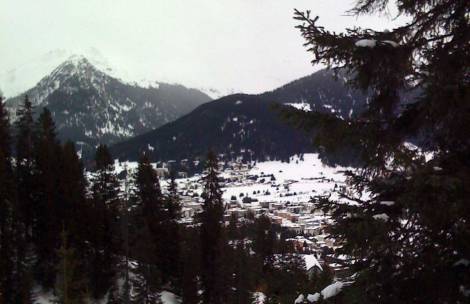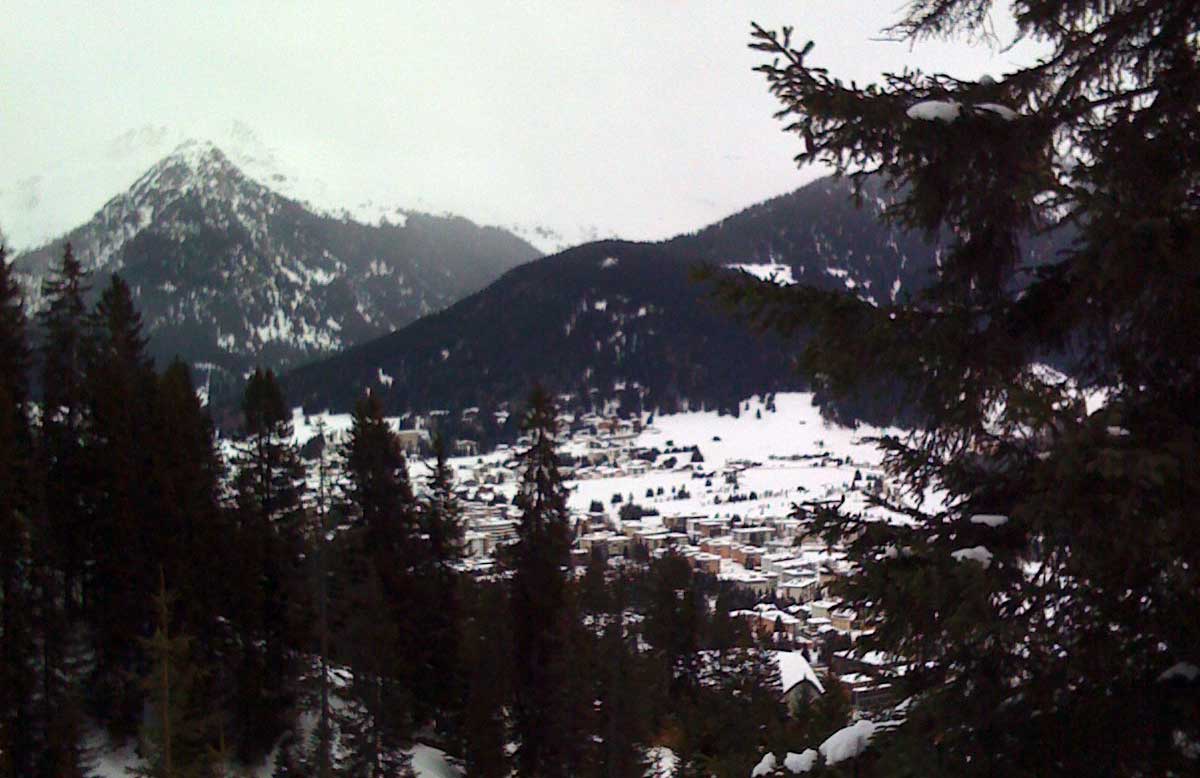The World Economic Forum worries about climate change. Here is the organization’s page on the issue, including its “CEO Climate Policy Recommendations.” (For example: “‘Environmentally effective and economically efficient’ framework proposed to succeed Kyoto Accord.” Get on that, U.N.!) This week, WEF’s CEO friends are at the Annual Meeting in Davos, Switzerland, which we’ve mentioned.
Which made us wonder: How much did getting all of those CEOs and government leaders and baseball players together itself contribute to climate change?
The answer is: quite a bit. But before we get to the actual number, here’s how we got it. Earlier this week, the business site Quartz got its hands on the complete attendee list for this year’s Davos gathering. Quartz parsed the data about 15 different ways (go play with the sorting tool!) and, when we asked, were happy to share the data with us. (The Forum has an updated list [PDF], but Quartz’ data is more than enough for our purposes.)

Getting to Davos isn’t easy. The picture above shows the town itself, small boxes at the base of various Alps and foothills. There’s no airport. The only ways in are by train, car, or — for the elite of the elite — helicopter. The closest major airport is in Zurich, about a three-hour train ride away. For the smallest possible carbon footprint, then, someone from the United States would fly to Zurich and take the train in. (This is what I did, in 2009.) Seems modest. Until you realize that over 700 people came from the United States to attend the Annual Meeting — not including World Economic Forum staff or support staff.
We took Quartz’ data on the originating country of each of the 2,500-plus listed attendees, and estimated the flight distance between that country’s capital (for the sake of convenience) and Zurich. To calculate carbon dioxide production, we used a figure of .21 kilograms per passenger per kilometer for the flight, and 22 kilograms for a three-hour train trip, per person. To be extra generous, we didn’t include people actually from Switzerland.
Here’s what those flights looked like, as the crow flies. The width of a line represents the number of people from each country that attended Davos. (Every line except the United States is to scale. The United States had two-and-a-half times the next largest contingent, so it would have skewed everything.)
[protected-iframe id=”75043be6d1cee75378dae3c0a3bd8473-5104299-34907067″ info=”https://maps.googleapis.com/maps/api/js?v=3.exp&sensor=true” width=”470″ height=”350″]
And now, the numbers. The 2,630 attendees cumulatively travelled over 550,000 kilometers by plane; in doing so, they generated 2.47 million kilograms of carbon dioxide. 2,470 metric tons. Add in train travel — 57,860 more kilograms — and the total footprint for those jetting in to Davos is 2,520 metric tons of carbon dioxide. The data, by country:
In the grand scheme of things, this isn’t an earth-shattering (earth-boiling?) amount of carbon dioxide. It’s the equivalent of a year’s production by 350 people from China (or 146 Americans). But again: This is only travel to the site, only including attendees. There’s a whole coterie of staff and drivers and media who don’t figure into this number.
As we noted yesterday, the Forum this week released a report reinforcing the urgent need to reduce fossil fuel use, presumably even 2,500 tons of it. So we’ll grant it an exemption for the carbon pollution the gathering itself creates. After all, getting people together to discuss important world issues certainly takes precedence. When these people leave Davos — doubling the total emissions to over 5,000 tons of CO2 — they’ll at least be bringing back some of what they learned to their home countries.
Incidentally, if you’re at Davos, you still have time to get to the forum “Life Lessons from Jazz — Improvisation as a Way of Life.” If you’re pressed for time, borrow someone’s town car.



